SHANGHAI, Aug. 2 (Xinhua) — A landmark report on the global prevention and control of liver cancer, led by Chinese experts and recently published in The Lancet, presents a new international roadmap to tackle a growing global health burden.
The report, titled “The Lancet Commission on addressing the global hepatocellular carcinoma burden: comprehensive strategies from prevention to treatment,” was released on July 28, World Hepatitis Day.
It is the first time in over 200 years that The Lancet has published global health research led by Chinese experts. The study also involved contributions from 51 specialists across countries and regions such as Japan, the Republic of Korea, the United States and Spain, among others.
The Lancet Commission was co-chaired by Fan Jia, an academician of the Chinese Academy of Sciences. Speaking at a press conference in Zhongshan Hospital affiliated with Fudan University in Shanghai, Fan emphasized what distinguishes the study from typical academic reviews.
Unlike standard reviews or research articles, the report focuses on implementable public health strategies, said Fan.
Liver cancer, which is often referred to as a silent killer due to its long latency and subtle early symptoms, poses a serious challenge to global public health systems. The published report systematically reviews global practices, including China’s experience, and covers topics such as epidemiology, risk factor control, early diagnosis, pathology, imaging, treatment strategies and medical ethics.
One key finding is the shifting pattern in liver cancer aetiology. While hepatitis B and C remain the dominant risk factors, cases linked to metabolic dysfunction-associated steatotic liver disease (MASLD) and alcohol consumption are on the rise. Unhealthy lifestyle habits such as high-sugar diets and lifestyles that lead to obesity are also reshaping the global liver cancer landscape.
Despite these challenges, the report estimates that about 60 percent of liver cancer cases are preventable. “China has accumulated valuable experience in prevention and control,” said Zhou Jian, president of Zhongshan Hospital. “From hepatitis B vaccination and early screening to improvements in clinical care, our efforts show that liver cancer can be managed like other chronic diseases such as hypertension or diabetes.”
To reduce new cases and deaths, the report proposes a three-tiered strategy.
First, prevention efforts should focus on expanding hepatitis B vaccination, promoting antiviral treatment for hepatitis B and C, and enhancing public awareness about the risks of unhealthy diets and alcohol.
Second, liver fibrosis screening should be integrated into health checks for high-risk groups such as people with diabetes or obesity, and there should be a broader adoption of non-invasive testing to improve accessibility.
Third, treatment systems should be strengthened by improving access to drugs, narrowing regional disparities, and incorporating palliative care at the start of treatment.
According to the report, liver cancer accounts for an estimated 870,000 new cancer cases and 760,000 deaths globally each year. If effective prevention measures are not taken, the global burden is projected to rise significantly, with new cases and deaths expected to reach 1.52 million and 1.37 million by 2050.
Modeling suggests that achieving an average annual reduction of at least 2 percent in age-standardized incidence rates is necessary to reverse this trend, potentially preventing 8.8 million new cases and 7.7 million deaths over the next 25 years. ■
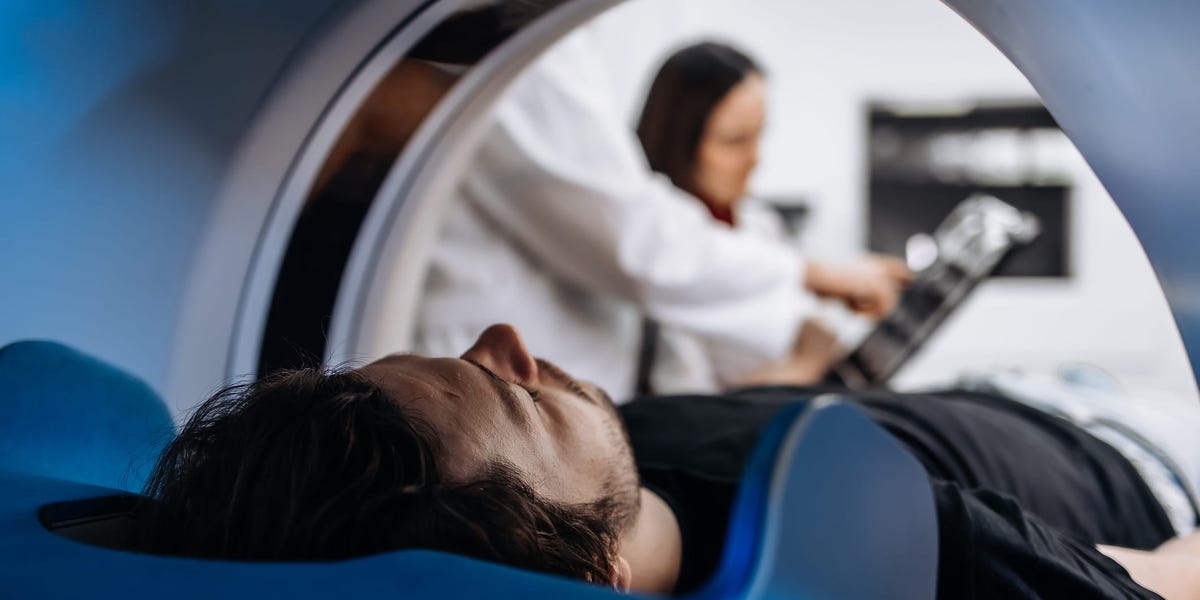
Doctors have been arguing over the utility of preventive full-body MRI scans for decades. In 2004, it became a central plot point on an episode of the TV show “Scrubs.”
“I am considering offering full-body scans here at Sacred Heart. What do you think?” Dr. Bob Kelso, chief of medicine at the hospital in fictional San DiFrangeles, asks.
“I think showing perfectly healthy people every harmless imperfection in their body just to scare them into taking invasive and often pointless tests is an unholy sin,” Dr. Perry Cox responds, echoing a sentiment many real doctors have toward high-end preventive scans.
Mitch Haaseth/Disney General Entertainment Content via Getty Images
It’s been more than 20 years since that Scrubs episode first aired, and yet real doctors are no closer to settling their big debate about full-body MRIs.
Preventive full-body MRIs are now used in high-end longevity clinics and are available through a growing suite of direct-to-consumer offerings. Prices range from $2,500 or more for a one-hour scan to new AI-assisted offerings that cost $500 and only take about 20 minutes.
Ernesto Ruscio/GC Images
Stars and longevity fiends, including Kim Kardashian, tout these scans on social media, and everyday patients share real success stories, gripping testimonials of lifesaving insights they’ve gleaned from scanning their entire bodies for signs of danger.
Genetic sequencing pioneer Craig Venter previously told Business Insider that he diagnosed his own prostate cancer “that was about to metastasize” with a high-end MRI “after being told by the best medical system that I didn’t have prostate cancer.”
Full-body MRIs can detect cancer early. But they can also have you parting with thousands of dollars, scheduling numerous follow up appointments to chase little dots on your scans, and in the end revealing nothing.
The promise of a full-body MRI is that it can uncover dangerous things happening inside you that aren’t bad enough — yet — to get picked up on other tests.
Danielle Hoeg is a perfect example of how this can work. A non-smoker in her early 40s and mom of three, she told Business Insider she decided to do a Prenuvo scan after some “wonky” blood work was taken at her doctor’s office, which suggested something might be wrong.
She signed up for a $2,500 Prenuvo scan (not covered by insurance), which took about an hour. The scan highlighted a few things: some moderate spinal degeneration and a lingering sinus infection. It also flagged a “minor” white cloud on her lung, an “indeterminate lesion” that “appears at low risk of becoming problematic,” her Prenuvo report found.
A blood test for lung cancer came back negative, but a CT scan her doctor ordered showed that, sure enough, that lung spot was likely cancer. She eventually had a stage 1 tumor removed, just three months after her Prenuvo scan.
Hoeg was in shock. She was a 43-year-old, healthy non-smoker with lung cancer. How could this be?
“I’m not out there smoking, asking for lung cancer, I’m not working in a coal mine,” she told Business Insider.
Since she caught this cancer early, she didn’t have to undergo any aggressive radiation or chemotherapy treatments. She tells everyone she can about her experience with Prenuvo.
“I have a little bit less lung, I have some scars, but I’m OK, and I’m here, and I’m with my kids, and swimming and running,” she said.
Emi Gal, founder of Prenuvo competitor Ezra, recently acquired by Function Health, says this is exactly what full-body scans are meant for. They’re helping find cancer that either can’t be screened for or won’t get picked up on regular screening tests because it’s not big enough yet.
“My mother passed away from cancer because she found cancer late,” Gal told BI. “I’ve dedicated my career and my life really to helping everyone in the world detect cancer early.”
Ezra/Function Health
The scans can also pick up back and spine problems, aneurysms, liver disease, and cysts.
Inevitably, they will also flag many things as worrisome that people don’t need to worry about at all, like benign scar tissue or inflammation lingering from a recent illness or injury. The scan can’t tell you definitively, “hey, this is trouble.” It just shows you when something’s there.
Getty Images
As the fictional Dr. Cox presciently said on Scrubs, “If you get this scan, the next year of your life is going to be a series of endless tests.”
Prenuvo says that nearly half of its patients “find something to keep an eye on,” but doctors want to know: Are they saving lives?
For now, you won’t find major medical boards or cancer advocacy organizations recommending full-body MRIs. There isn’t the hard evidence they’d need to back up a medical recommendation.
“Your end goal is saving years of life, helping people live longer,” Dr. Samir Abboud, the chief of emergency radiology at Northwestern Memorial Hospital in Chicago, told BI.
If annual scans are overkill, our annual check-ups are often not enough. Independent reviews consistently show that yearly health checks have little to no effect on preventing deadly diseases.
Dr. Tim Arling, who runs a concierge medicine practice focused on longevity, says he only occasionally recommends full-body MRIs to his patients. What he’s started doing more often is spending a few extra minutes waving a little medical wand over parts of a patient’s body as a preliminary scan for trouble.
He’s using a portable ultrasound machine, the same device doctors use to look at a fetus as it’s developing in utero. The technique is common in Japan, where doctors often glide ultrasound wands over a person’s thyroid, as an initial screen for cancer.
Pyrosky
In addition to the thyroid gland, Arling sometimes glides his ultrasound over a patient’s liver, kidneys, or aorta, “as a little extension of the physical exam.”
“If I see something, I’ll have a discussion with the patient, we’ll decide if we want to do something in real time,” he said.
The move costs nothing extra to the patient and takes just a few extra minutes. Critically, it also includes the doctor in the discussion from the get-go.
Hoeg’s stage 1 cancer was graded as a “minor” finding by Prenuvo. If Abboud, who’s both a doctor and a friend, hadn’t said she should get it looked at ASAP, would she have known to take the finding so seriously?
courtesy of Danielle Hoeg
Arling said he went through a “very bizarre three-week period” last year where he ended up flagging a case of early-stage liver cancer, plus another case of early-stage kidney cancer using ultrasounds.
“If primary care is trying to catch things earlier, the question comes down to how can we do it in a way that doesn’t necessarily add a whole bunch of extra cost or a whole bunch of extra waste?”
Maybe “we can start just sort of waving wands over people and getting a little more information,” he said.
simonkr/Getty Images
For some people, doctors are already in agreement that full-body cancer scans are a good thing. If you have a rare condition called Li-Fraumeni syndrome, which puts you at greater risk of developing all sorts of cancer, annual full-body scans are a go-to, and they’re covered by insurance.
For everybody else, the jury — a jury full of practicing physicians — is still out.
If you’re interested in a full-body scan, Dr. Arling recommends weighing a few key factors:
You might want to consider a full-body MRI if you’ve got a family history of cancer.
But that scan should be in addition to other recommended cancer screenings you’re already doing, Arling said: “paps, mammos, PSAs, colonoscopies, the standard stuff.”
Another option is a cancer blood test like Galleri. It costs $950.
If you are anxious about medical care or testing, full-body scans may not be for you.
“If you already have that health-anxious person, I’m not super enthusiastic about recommending this test, because they’re going to find something,” Arling said.
On the other hand, full-body scans are good at “looking for trouble,” Arling said.
“If you’re really trying to find the thing, not rule out the thing, then the MRI is going to have better data. It has higher sensitivity,” he said.
It’ll be more sensitive than a Galleri test, for example.
Is this the best use of a few hundred to a few thousand bucks of your cash?
Might you derive more health benefits from putting those dollars into things we know will improve healthy aging, like more exercise, some personal training, better nutrition, or less stress (a nice vacation, perhaps?)
“If it gets people being healthy, great, but if it’s just a thing that rich people do to flaunt that they’re healthier than you, it doesn’t quite achieve the goal,” Arling said.
Finally, full-body MRIs may not be for you if you have metal in your body (sorry).
That’s because they work by harnessing the power of magnets. There’s no harmful radiation involved, but you generally can’t wear anything metal, inside or out. (Discuss this with your doctor, though — many surgical implants are designed to be MRI-safe).
“A typical three tesla MRI is 60,000 times the strength of the magnetic pull of Earth,” Gal said.
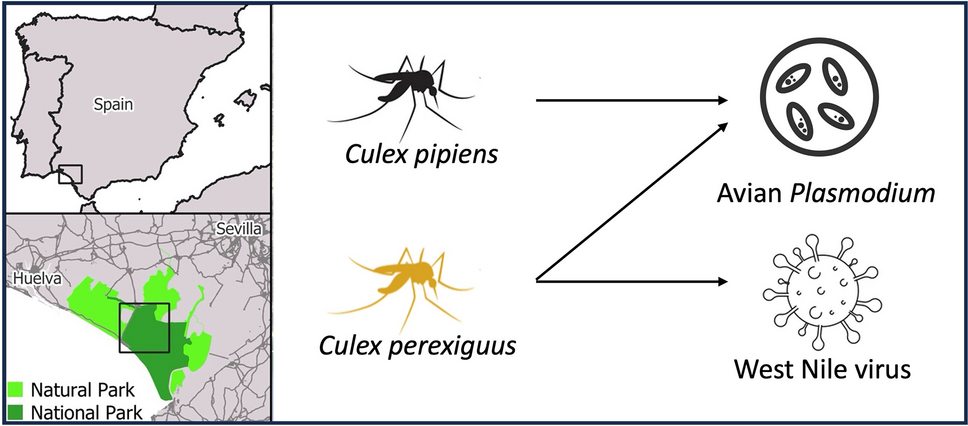
Ferraguti M, Martínez-de la Puente J, Figuerola J. Ecological effects on the dynamics of West Nile virus and avian Plasmodium: the importance of mosquito communities and landscape. Viruses. 2021;13:1208.
García San Miguel Rodríguez-Alarcón L, Fernández-Martínez B, Sierra Moros MJ, Vázquez A, Julián Pachés P, García Villacieros E, et al. Unprecedented increase of West Nile virus neuroinvasive disease, Spain, summer 2020. Euro Surveill. 2021;26:2002010.
Centro Nacional de Epidemiología. Instituto de Salud Carlos III. CIBERESP. Informe epidemiológico sobre la situación de la fiebre del Nilo occidental en España. Año 2024. Madrid, 27 de febrero de 2025. https://cne.isciii.es/documents/d/cne/informe_renave_fno-2024
Figuerola J, Jiménez-Clavero MÁ, Ruíz-López MJ, Llorente F, Ruiz S, Hoefer A, et al. A one health view of the West Nile virus outbreak in Andalusia (Spain) in 2020. Emerg Microbes Infect. 2022;11:2570–8.
Vázquez A, Ruiz S, Herrero L, Moreno J, Molero F, Magallanes A, et al. West Nile and Usutu viruses in mosquitoes in Spain, 2008–2009. Am J Trop Med Hyg. 2011;85:178–81.
Magallanes S, Llorente F, Ruiz-López MJ, Martínez-de la Puente J, Soriguer R, Calderon J, et al. Long-term serological surveillance for West Nile and Usutu virus in horses in south-West Spain. One Health. 2023;17:100578.
Magallanes S, Llorente F, Ruiz-López MJ, Martínez-de la Puente J, Ferraguti M, Gutiérrez-López R, et al. Warm winters are associated to more intense West Nile virus circulation in southern Spain. Emerg Microbes Infect. 2024;13:2348510.
Martínez-de la Puente J, Ferraguti M, Ruiz S, Roiz D, Llorente F, Pérez-Ramírez E, et al. Mosquito community influences West Nile virus seroprevalence in wild birds: implications for the risk of spillover into human populations. Sci Rep. 2018;8:2599.
Roiz D, Vázquez A, Ruiz S, Tenorio A, Soriguer R, Figuerola J. Evidence that passerine birds act as amplifying hosts for Usutu virus circulation. EcoHealth. 2019;16:734–42.
Valkiūnas G, Iezhova TA. Keys to the avian malaria parasites. Malaria J. 2018;17:212.
Bensch S, Hellgren O, Pérez-Tris J. MalAvi: a public database of malaria parasites and related haemosporidians in avian hosts based on mitochondrial cytochrome b lineages. Mol Ecol Res. 2009;9:1353–8.
Santiago-Alarcon D, Palinauskas V, Schaefer HM. Diptera vectors of avian Haemosporidian parasites: untangling parasite life cycles and their taxonomy. Biol Rev Camb Philos Soc. 2012;87:928–64.
Marzal A, Bensch S, Reviriego M, Balbontin J, De Lope F. Effects of malaria double infection in birds: one plus one is not two. J Evol Biol. 2008;21:979–87.
Werner D, Kampen H. 4. Zoos and wildlife parks: a laboratory for the study of mosquitoborne wildlife diseases. In: Ecology of diseases transmitted by mosquitoes to wildlife. Leiden, The Netherlands: Wageningen Academic; 2022.
Dadam D, Robinson RA, Clements A, Peach WJ, Bennett M, Rowcliffe JM, et al. Avian malaria-mediated population decline of a widespread iconic bird species. R Soc Open Sci. 2019;6:182197.
Ferraguti M, Martínez-de la Puente J, Bensch S, Roiz D, Ruiz S, Viana DS, et al. Ecological determinants of avian malaria infections: an integrative analysis at landscape, mosquito and vertebrate community levels. J Anim Ecol. 2018;87:727–40.
Díez-Fernández A, Martín J, Martínez-de la Puente J, Gangoso L, López P, Soriguer R, et al. Effects of sex and sampling site on the relative proportion of pesticides in uropygial gland secretions of European Blackbirds (Turdus merula). Ibis. 2023;165:142–52.
Ferraguti M, Martínez-de la Puente J, Ruiz S, Soriguer R, Figuerola J. On the study of the transmission networks of blood parasites from SW Spain: diversity of avian haemosporidians in the biting midge Culicoides circumscriptus and wild birds. Parasit Vectors. 2013;6:208.
Ferraguti M, Martínez-de la Puente J, Ruiz S, Soriguer RC, Figuerola J. Landscape and mosquito community impact the avian Plasmodium infection in Culex pipiens. Science. 2024;27:109194.
Bravo-Barriga D, Parreira R, Almeida AP, Calado M, Blanco-Ciudad J, Serrano-Aguilera FJ, et al. Culex pipiens as a potential vector for transmission of Dirofilaria immitis and other unclassified Filarioidea in Southwest Spain. Vet Parasitol. 2016;223:173–80.
Morchón R, Bargues MD, Latorre JM, Melero-Alcíbar R, Pou-Barreto C, Mas-Coma S, et al. Haplotype H1 of Culex pipiens implicated as natural vector of Dirofilaria immitis in an endemic area of Western Spain. Vector Borne Zoonotic Dis. 2007;7:653–8.
Acosta L, León-Quinto T, Bornay-Llinares FJ, Simón MA, Simón F, Morchón R. Dirofilaria immitis: a new potential pathogen for the endangered Iberian Lynx (Lynx pardinus). Int J Appl Res Vet Med. 2019;17:17–21.
Martínez-de la Puente J, Ferraguti M, Jiménez-Peñuela J, Ruiz S, Martínez J, Roiz D, et al. Filarial worm circulation by mosquitoes along an urbanization gradient in southern Spain. Transbound Emerg Dis. 2019;66:1752–7.
Martínez-de la Puente J, Magallanes S, González MA, Ruiz-López MJ, Soriguer RC, Caceres F, et al. The invasive Aedes albopictus in the Doñana World Heritage Site. Parasit Vectors. 2024;17:343.
Becker N, Petrić D, Zgomba M, Boase C, Madon MB, Dahl C, et al. A. Mosquitoes: identification, ecology and control. Cham: Springer Nature; 2020.
Vázquez A, Herrero L, Negredo A, Hernández L, Sánchez-Seco MP, Tenorio A. Real time PCR assay for detection of all known lineages of West Nile virus. J Virol Methods. 2016;236:266–70.
Hellgren O, Waldenström J, Bensch S. A new PCR assay for simultaneous studies of Leucocytozoon, Plasmodium, and Haemoproteus from avian blood. J Parasitol. 2004;90:797–802.
Altschul SF, Gish W, Miller W, Myers EW, Lipman DJ. Basic local alignment search tool. J Mol Biol. 1990;1990:403–10.
Casiraghi M, Anderson TJ, Bandi C, Bazzocchi C, Genchi C. A phylogenetic analysis of filarial nematodes: comparison with the phylogeny of Wolbachia endosymbionts. Parasitology. 2001;122:93–103.
McLure A, O’Neill B, Mayfield H, Lau C, McPherson B. PoolTestR: an R package for estimating prevalence and regression modelling for molecular xenomonitoring and other applications with pooled samples. Environ Model Softw. 2021;145:105158.
R Core Team. R: a language and environment for statistical computing. R Foundation for Statistical Computing. Vienna, Austria; 2024. https://www.R-project.org/
Muñoz J, Ruiz S, Soriguer R, Alcaide M, Viana DS, Roiz D, et al. Feeding patterns of potential West Nile virus vectors in south-west Spain. PLoS ONE. 2012;7:e39549.
Ruiz-López MJ, Muñoz-Chimeno M, Figuerola J, Gavilán AM, Varona S, Cuesta I, et al. Genomic analysis of West Nile virus lineage 1 detected in mosquitoes during the 2020–2021 outbreaks in Andalusia. Spain Viruses. 2023;15:266.
Garrigós M, Garrido M, Ruiz-López MJ, García-López MJ, Veiga J, Magallanes S, et al. Microbiota composition of Culex perexiguus mosquitoes during the West Nile virus outbreak in southern Spain. PLoS ONE. 2024;19:e0314001.
Martínez-de la Puente J, Ruiz S, Soriguer R, Figuerola J. Effect of blood meal digestion and DNA extraction protocol on the success of blood meal source determination in the malaria vector Anopheles atroparvus. Malaria J. 2013;12:109.
Mora-Rubio C, Ferraguti M, Magallanes S, Bravo-Barriga D, Hernandez-Caballero I, Marzal A, et al. Unravelling the mosquito-haemosporidian parasite-bird host network in the southwestern Iberian Peninsula: insights into malaria infections, mosquito community and feeding preferences. Parasit Vectors. 2023;16:395.
Garrigós M, Veiga J, Garrido M, Marín C, Recuero J, Rosales MJ, et al. Avian Plasmodium in invasive and native mosquitoes from southern Spain. Parasit Vectors. 2024;17:40.
Ferraguti M, Martínez-de la Puente J, Muñoz J, Roiz D, Ruiz S, Soriguer R, et al. Avian Plasmodium in Culex and Ochlerotatus mosquitoes from southern Spain: effects of season and host-feeding source on parasite dynamics. PLoS ONE. 2013;8:e66237.
Martínez-de la Puente J, Ferraguti M, Ruiz S, Roiz D, Soriguer RC, Figuerola J. Culex pipiens forms and urbanization: effects on blood feeding sources and transmission of avian Plasmodium. Malaria J. 2016;15:589.
Gutiérrez-López R, Martínez-de la Puente J, Gangoso L, Soriguer R, Figuerola J. Plasmodium transmission differs between mosquito species and parasite lineages. Parasitology. 2020;147:441–7.
Roiz D, Ruiz S, Soriguer R, Figuerola J. Climatic effects on mosquito abundance in Mediterranean wetlands. Parasit Vectors. 2014;7:333.
Muriel J, Graves JA, Gil D, Magallanes S, Salaberria C, Casal-López M, et al. Molecular characterization of avian malaria in the spotless starling (Sturnus unicolor). Parasitol Res. 2018;117:919–28.
Figuerola J, Martínez-de la Puente J, Díez-Fernández A, Thomson RL, Aguirre JI, Faivre B, et al. Urbanization correlates with the prevalence and richness of blood parasites in Eurasian Blackbirds (Turdus merula). Sci Total Environ. 2024;922:171303.
Montoya-Alonso JA, Morchón R, García-Rodríguez SN, Falcón-Cordón Y, Costa-Rodríguez N, Matos JI, et al. Expansion of canine heartworm in Spain. Animals. 2022;12:1268.
Martínez-de la Puente J, Méndez M, Ruiz S, Godoy JA, Soriguer RC, Figuerola J. Individual identification of endangered species using mosquito blood meals: a proof-of-concept study in Iberian lynx. Parasitol Res. 2015;114:1607–10.
Ferreira CA, de Pinho MV, Novo MT, Calado MM, Gonçalves LA, Belo SM, et al. First molecular identification of mosquito vectors of Dirofilaria immitis in continental Portugal. Parasit Vectors. 2015;8:139.
Szentivanyi T, González LV, Klein Á, Soltész Z, Garamszegi LZ. Complementing community science with xenomonitoring: understanding the eco-epidemiology of Dirofilaria immitis infection in dogs and mosquitoes. Parasit Vectors. 2025;18:233.
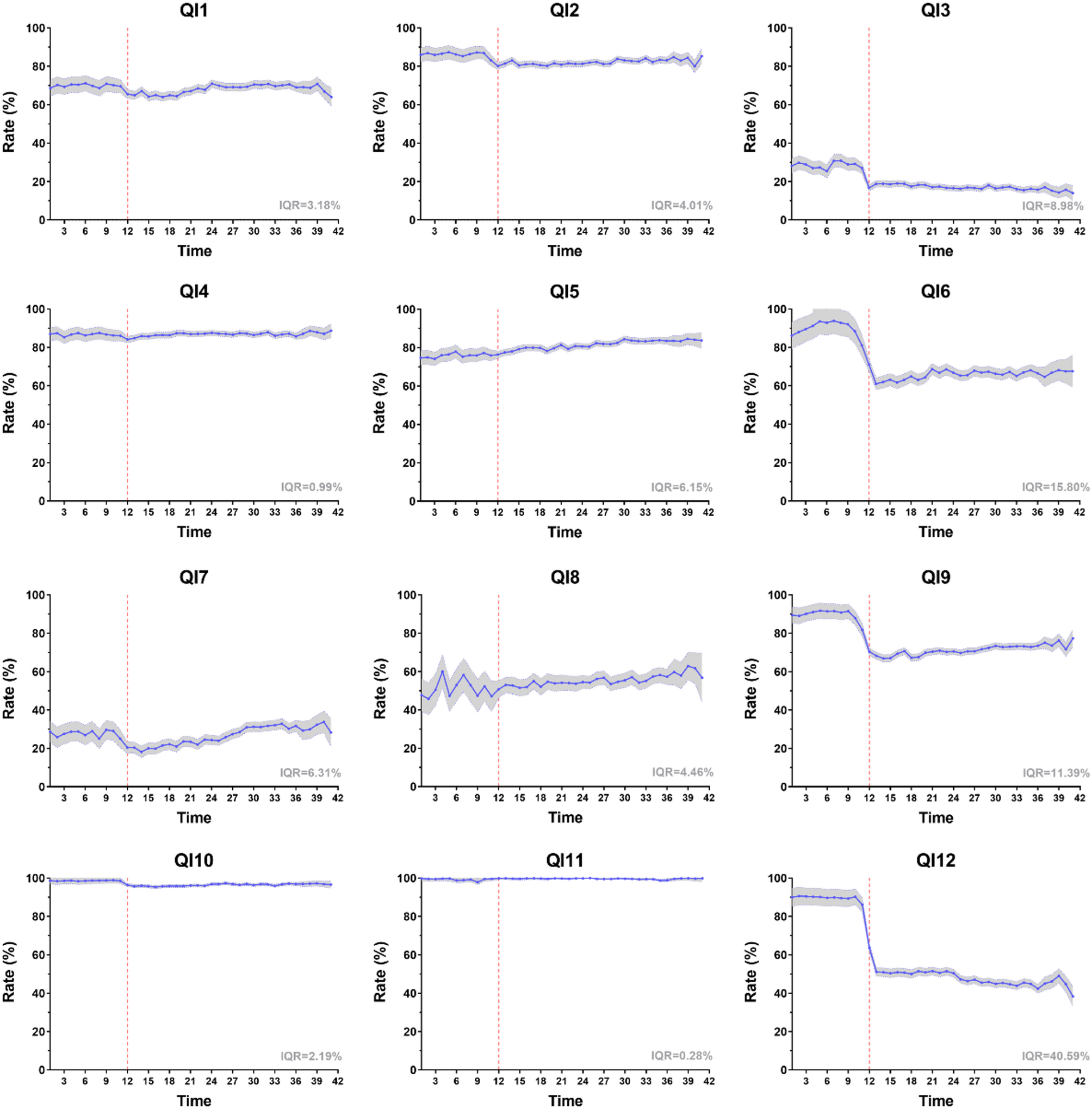
Barthels D, Das H. Current advances in ischemic stroke research and therapies. Biochim Biophys Acta Mol Basis Dis. 2020;1866(4):165260.
Collaborators GN. Global, regional, and National burden of neurological disorders, 1990–2016: a systematic analysis for the global burden of disease study 2016. Lancet Neurol. 2019;18(5):459–80.
Roth GA, Mensah GA, Johnson CO, Addolorato G, Ammirati E, Baddour LM, Barengo NC, Beaton AZ, Benjamin EJ, Benziger CP, et al. Global burden of cardiovascular diseases and risk factors, 1990–2019: update from the GBD 2019 study. J Am Coll Cardiol. 2020;76(25):2982–3021.
The Lancet N. Time is brain for carotid endarterectomy. Lancet Neurol. 2010;9(9):841.
Grol R, Grimshaw J. From best evidence to best practice: effective implementation of change in patients’ care. Lancet. 2003;362(9391):1225–30.
Fu R, Xiang J, Bao H, Wang Z, Wang Y, Chen Y, Zhang H, Liu D, Liu M. Association between process indicators and in-hospital mortality among patients with chronic heart failure in China. Eur J Public Health. 2015;25(3):373–8.
Banfield WH, Elghawy O, Dewanjee A, Brady WJ. Impact of COVID-19 on emergency department management of stroke and STEMI. A narrative review. Am J Emerg Med. 2022;57:91–7.
Zhai P, Ding Y, Li Y. The impact of COVID-19 on ischemic stroke. Diagn Pathol. 2020;15(1):78.
Labrague LJ, de Los Santos JAA, Fronda DC. Factors associated with missed nursing care and nurse-assessed quality of care during the COVID-19 pandemic. J Nurs Adm Manag. 2022;30(1):62–70.
Yaghi S, Ishida K, Torres J, Mac Grory B, Raz E, Humbert K, Henninger N, Trivedi T, Lillemoe K, Alam S, et al. SARS-CoV-2 and stroke in a new York healthcare system. Stroke. 2020;51(7):2002–11.
Kite TA, Ludman PF, Gale CP, Wu J, Caixeta A, Mansourati J, Sabate M, Jimenez-Quevedo P, Candilio L, Sadeghipour P, et al. International prospective registry of acute coronary syndromes in patients with COVID-19. J Am Coll Cardiol. 2021;77(20):2466–76.
Gluckman TJ, Wilson MA, Chiu ST, Penny BW, Chepuri VB, Waggoner JW, Spinelli KJ. Case rates, treatment approaches, and outcomes in acute myocardial infarction during the coronavirus disease 2019 pandemic. JAMA Cardiol. 2020;5(12):1419–24.
Shah SGS, Nogueras D, van Woerden HC, Kiparoglou V. The COVID-19 pandemic: A pandemic of lockdown loneliness and the role of digital technology. J Med Internet Res. 2020;22(11):e22287.
Emanuel EJ, Persad G, Upshur R, Thome B, Parker M, Glickman A, Zhang C, Boyle C, Smith M, Phillips JP. Fair allocation of scarce medical resources in the time of Covid-19. N Engl J Med. 2020;382(21):2049–55.
Livingston E, Desai A, Berkwits M. Sourcing personal protective equipment during the COVID-19 pandemic. JAMA. 2020;323(19):1912–4.
Adams JG, Walls RM. Supporting the health care workforce during the COVID-19 global epidemic. JAMA. 2020;323(15):1439–40.
Li J, Zhang N, Zhou Z, Huang X, Fang W, Yan H, Chen J, Wang W, Xiang D, Su X, et al. Twin peaks of in-hospital mortality among patients with STEMI across five phases of COVID-19 outbreak in china: a nation-wide study. Sci China Life Sci. 2022;65(9):1855–65.
Rudilosso S, Laredo C, Vera V, Vargas M, Renú A, Llull L, Obach V, Amaro S, Urra X, Torres F, et al. Acute stroke care is at risk in the era of COVID-19: experience at a comprehensive stroke center in Barcelona. Stroke. 2020;51(7):1991–5.
De Luca G, Cercek M, Jensen LO, Vavlukis M, Calmac L, Johnson T, Roura IFG, Ganyukov V, Wojakowski W, von Birgelen C, et al. Impact of COVID-19 pandemic and diabetes on mechanical reperfusion in patients with STEMI: insights from the ISACS STEMI COVID 19 registry. Cardiovasc Diabetol. 2020;19(1):215.
Bersano A, Kraemer M, Touzé E, Weber R, Alamowitch S, Sibon I, Pantoni L. Stroke care during the COVID-19 pandemic: experience from three large European countries. Eur J Neurol. 2020;27(9):1794–800.
Teng GG, Curtis JR, Saag KG. Quality health care gaps in osteoporosis: how can patients, providers, and the health system do a better job? Curr Osteoporos Rep. 2009;7(1):27–34.
Yin C, Li J, Meng W, Hou S, Liu D, Liu M, Yu L, Guo R, Han X, Liu M. Trends in care quality in China from 2011 to 2017: an analysis based on the National specific (Single) disease monitoring system. J Glob Health. 2023;13:04045.
Hsieh MT, Hsieh CY, Tsai TT, Wang YC, Sung SF. Performance of ICD-10-CM diagnosis codes for identifying acute ischemic stroke in a National health insurance claims database. Clin Epidemiol. 2020;12:1007–13.
Medical quality control indicators for neurological diseases and nephrology specialties. (2020 version) [http://www.nhc.gov.cn/yzygj/s7657/202001/61297c8b37914c4798c9b2c39735c769.shtml].
Brott T, Adams HP Jr., Olinger CP, Marler JR, Barsan WG, Biller J, Spilker J, Holleran R, Eberle R, Hertzberg V, et al. Measurements of acute cerebral infarction: a clinical examination scale. Stroke. 1989;20(7):864–70.
Haas K, Rücker V, Hermanek P, Misselwitz B, Berger K, Seidel G, Janssen A, Rode S, Burmeister C, Matthis C, et al. Association between adherence to quality indicators and 7-Day In-Hospital mortality after acute ischemic stroke. Stroke. 2020;51(12):3664–72.
Campbell SM, Braspenning J, Hutchinson A, Marshall M. Research methods used in developing and applying quality indicators in primary care. Qual Saf Health Care. 2002;11(4):358–64.
Measuring and improving quality of care. A report from the American heart association/american college of cardiology first scientific forum on assessment of healthcare quality in cardiovascular disease and stroke. Stroke. 2000;31(4):1002–12.
Nogueira RG, Qureshi MM, Abdalkader M, Martins SO, Yamagami H, Qiu Z, Mansour OY, Sathya A, Czlonkowska A, Tsivgoulis G, et al. Global impact of COVID-19 on stroke care and IV thrombolysis. Neurology. 2021;96(23):e2824–38.
Song L, Ouyang M, Sun L, Chen C, Anderson CS. Impact of COVID-19 on patient behavior to stroke symptoms in China. Cerebrovasc Dis. 2020;49(5):570–1.
Gu S, Dai Z, Shen H, Bai Y, Zhang X, Liu X, Xu G. Delayed stroke treatment during COVID-19 pandemic in China. Cerebrovasc Dis. 2021;50(6):715–21.
Powers WJ, Rabinstein AA, Ackerson T, Adeoye OM, Bambakidis NC, Becker K, Biller J, Brown M, Demaerschalk BM, Hoh B et al. 2018 Guidelines for the Early Management of Patients With Acute Ischemic Stroke: A Guideline for Healthcare Professionals From the American Heart Association/American Stroke Association. Stroke 2018, 49(3):e46-e110.
Zhao J, Li H, Kung D, Fisher M, Shen Y, Liu R. Impact of the COVID-19 epidemic on stroke care and potential solutions. Stroke. 2020;51(7):1996–2001.
Hamer M, Batty GD. Association of body mass index and waist-to-hip ratio with brain structure: UK biobank study. Neurology. 2019;92(6):e594–600.
Kansagra AP, Goyal MS, Hamilton S, Albers GW. Collateral effect of Covid-19 on stroke evaluation in the united States. N Engl J Med. 2020;383(4):400–1.
Sughrue T, Swiernik MA, Huang Y, Brody JP. Laboratory tests as short-term correlates of stroke. BMC Neurol. 2016;16:112.
Chuang HN, Shih CH, Tsai HW, Jiang RS, Hsiao TH, Liu PY, Jan YJ, Wang JM. Laboratory surge response to the COVID-19 pandemic: an incident command system approach. J Multidisciplinary Healthc. 2022;15:1083–8.
Lasierra Monclús AB, González Á, Bernabéu Andreu FA, Caballé Martín I, Buño Soto A, Ibarz M, González Rodríguez C, Puzo Foncillas J. Effects of the COVID-19 pandemic on the activity of clinical laboratories in spain, evolution in the 2019–2021 period. Adv Lab Med. 2022;3(4):361–82.
Cheng ZJ, Zhan Z, Xue M, Zheng P, Lyu J, Ma J, Zhang XD, Luo W, Huang H, Zhang Y, et al. Public health measures and the control of COVID-19 in China. Clin Rev Allergy Immunol. 2023;64(1):1–16.
Xu T, Yang R. COVID-19 epidemic and public health measures in China. J Epidemiol Global Health. 2020;10(2):118–23.
Lu R, Zhao X, Li J, Niu P, Yang B, Wu H, Wang W, Song H, Huang B, Zhu N, et al. Genomic characterisation and epidemiology of 2019 novel coronavirus: implications for virus origins and receptor binding. Lancet. 2020;395(10224):565–74.
Jin H, Hong C, Chen S, Zhou Y, Wang Y, Mao L, Li Y, He Q, Li M, Su Y, et al. Consensus for prevention and management of coronavirus disease 2019 (COVID-19) for neurologists. Stroke Vascular Neurol. 2020;5(2):146–51.
Wang F, Liu J, Zhang P, Jiang W, Zhang L, Zhang M, Teng J, Wang J, Xie X, Cao J, et al. Expert consensus on prevention and control of COVID-19 in the neurological intensive care unit (first edition). Stroke Vascular Neurol. 2020;5(3):242–9.
Di Carlo A, Lamassa M, Baldereschi M, Pracucci G, Basile AM, Wolfe CD, Giroud M, Rudd A, Ghetti A, Inzitari D. Sex differences in the clinical presentation, resource use, and 3-month outcome of acute stroke in europe: data from a multicenter multinational hospital-based registry. Stroke. 2003;34(5):1114–9.
Vyas MV, Silver FL, Austin PC, Yu AYX, Pequeno P, Fang J, Laupacis A, Kapral MK. Stroke incidence by sex across the lifespan. Stroke. 2021;52(2):447–51.
Holroyd-Leduc JM, Kapral MK, Austin PC, Tu JV. Sex differences and similarities in the management and outcome of stroke patients. Stroke. 2000;31(8):1833–7.
Simpson CR, Wilson C, Hannaford PC, Williams D. Evidence for age and sex differences in the secondary prevention of stroke in Scottish primary care. Stroke. 2005;36(8):1771–5.
Eriksson M, Glader EL, Norrving B, Terént A, Stegmayr B. Sex differences in stroke care and outcome in the Swedish National quality register for stroke care. Stroke. 2009;40(3):909–14.
Mainz J, Andersen G, Valentin JB, Gude MF, Johnsen SP. Disentangling sex differences in use of reperfusion therapy in patients with acute ischemic stroke. Stroke. 2020;51(8):2332–8.
Reeves MJ, Bushnell CD, Howard G, Gargano JW, Duncan PW, Lynch G, Khatiwoda A, Lisabeth L. Sex differences in stroke: epidemiology, clinical presentation, medical care, and outcomes. Lancet Neurol. 2008;7(10):915–26.
Eriksson M, Åsberg S, Sunnerhagen KS, von Euler M. Sex differences in stroke care and outcome 2005–2018: observations from the Swedish stroke register. Stroke. 2021;52(10):3233–42.
Mayer-Suess L, Marto JP, Strambo D, Ntaios G, Nguyen T, Kiechl S, Pechlaner R, Nogueira R, Michel P, Knoflach M. Sex differences in acute stroke metrics and outcome dependent on COVID status. Eur J Neurol. 2024;31(5):e16221.
Fonarow GC, Reeves MJ, Zhao X, Olson DM, Smith EE, Saver JL, Schwamm LH. Age-related differences in characteristics, performance measures, treatment trends, and outcomes in patients with ischemic stroke. Circulation. 2010;121(7):879–91.
Bhalla A, Grieve R, Tilling K, Rudd AG, Wolfe CD. Older stroke patients in europe: stroke care and determinants of outcome. Age Ageing. 2004;33(6):618–24.
Wang HY, Gu HQ, Zhou Q, Jiang YY, Yang X, Wang CJ, Zhao XQ, Wang YL, Liu LP, Meng X, et al. Thrombolysis, time-to-treatment and in-hospital outcomes among young adults with ischaemic stroke in china: findings from a nationwide registry study in China. BMJ Open. 2022;12(6):e055055.
Nahas NE, Shokri H, Roushdy T, Dawood N, Zaki A, Farhoudi M, Hokmabadi ES, Al Hashmi A, Brola W, Kosno K et al. Do stroke services still show sex differences? A multicenter study. Neurol Sciences: Official J Italian Neurol Soc Italian Soc Clin Neurophysiol 2023.
Phan HT, Gall SL, Blizzard CL, Lannin NA, Thrift AG, Anderson CS, Kim J, Grimley R, Castley HC, Hand P, et al. Sex differences in care and Long-Term mortality after stroke: Australian stroke clinical registry. J Women’s Health (2002). 2019;28(5):712–20.
Tibæk M, Dehlendorff C, Jørgensen HS, Forchhammer HB, Johnsen SP, Kammersgaard LP. Increasing incidence of hospitalization for stroke and transient ischemic attack in young adults: A Registry-Based study. J Am Heart Assoc 2016, 5(5).
Bray BD, Ayis S, Campbell J, Hoffman A, Roughton M, Tyrrell PJ, Wolfe CD, Rudd AG. Associations between the organisation of stroke services, process of care, and mortality in england: prospective cohort study. BMJ (Clinical Res ed). 2013;346:f2827.
Tung YC, Jeng JS, Chang GM, Chung KP. Processes and outcomes of ischemic stroke care: the influence of hospital level of care. Int J Qual Health Care: J Int Soc Qual Health Care. 2015;27(4):260–6.
Al-Khaled M, Matthis C, Eggers J. Statin treatment in patients with acute ischemic stroke. Int J Stroke: Official J Int Stroke Soc. 2014;9(5):597–601.
Saver JL, Fonarow GC, Smith EE, Reeves MJ, Grau-Sepulveda MV, Pan W, Olson DM, Hernandez AF, Peterson ED, Schwamm LH. Time to treatment with intravenous tissue plasminogen activator and outcome from acute ischemic stroke. JAMA. 2013;309(23):2480–8.
Ingeman A, Pedersen L, Hundborg HH, Petersen P, Zielke S, Mainz J, Bartels P, Johnsen SP. Quality of care and mortality among patients with stroke: a nationwide follow-up study. Med Care. 2008;46(1):63–9.
Boehme AK, Esenwa C, Elkind MS. Stroke risk factors, genetics, and prevention. Circul Res. 2017;120(3):472–95.
van Almenkerk S, Smalbrugge M, Depla MF, Eefsting JA, Hertogh CM. What predicts a poor outcome in older stroke survivors? A systematic review of the literature. Disabil Rehabil. 2013;35(21):1774–82.
Veerbeek JM, Kwakkel G, van Wegen EE, Ket JC, Heymans MW. Early prediction of outcome of activities of daily living after stroke: a systematic review. Stroke. 2011;42(5):1482–8.
Sacco RL. Risk factors and outcomes for ischemic stroke. Neurology. 1995;45(2 Suppl 1):S10–14.
Caplan LR. Primary stroke centers vs comprehensive stroke centers with interventional capabilities: which is better for a patient with suspected stroke? JAMA Neurol. 2017;74(5):504–6.
Kushner BJ. Fifteen-Year outcome of surgery for the near angle in patients with accommodative Esotropia and a high accommodative convergence to accommodation ratio. Arch Ophthalmol. 2001;119(8):1150–3.
Turnwald BP, Boles DZ, Crum AJ. Association between indulgent descriptions and vegetable consumption: twisted carrots and dynamite beets. JAMA Intern Med. 2017;177(8):1216–8.
[http://www.gov.cn/xinwen/2020-07/24/content_5529646.htm]
Yang J, Zheng M, Cheng S, Ou S, Zhang J, Wang N, Cao Y, Wang J. Knowledge of stroke symptoms and treatment among community residents in Western urban China. J Stroke Cerebrovasc Diseases: Official J Natl Stroke Association. 2014;23 5:1216–24.
Le Bonniec A, Haesebaert J, Derex L, Porthault S, Préau M, Schott AM. Why patients delay their first contact with health services after stroke?? A qualitative focus Group-Based study. PLoS ONE. 2016;11(6):e0156933.
Driggin E, Madhavan MV, Bikdeli B, Chuich T, Laracy J, Biondi-Zoccai G, Brown TS, Der Nigoghossian C, Zidar DA, Haythe J, et al. Cardiovascular considerations for patients, health care workers, and health systems during the COVID-19 pandemic. J Am Coll Cardiol. 2020;75(18):2352–71.
Temporary Emergency Guidance to US Stroke Centers During the Coronavirus Disease. 2019 (COVID-19) Pandemic: On Behalf of the American Heart Association/American Stroke Association Stroke Council Leadership. Stroke 2020, 51(6):1910–1912.
Boukhris M, Hillani A, Moroni F, Annabi MS, Addad F, Ribeiro MH, Mansour S, Zhao X, Ybarra LF, Abbate A, et al. Cardiovascular implications of the COVID-19 pandemic: A global perspective. Can J Cardiol. 2020;36(7):1068–80.
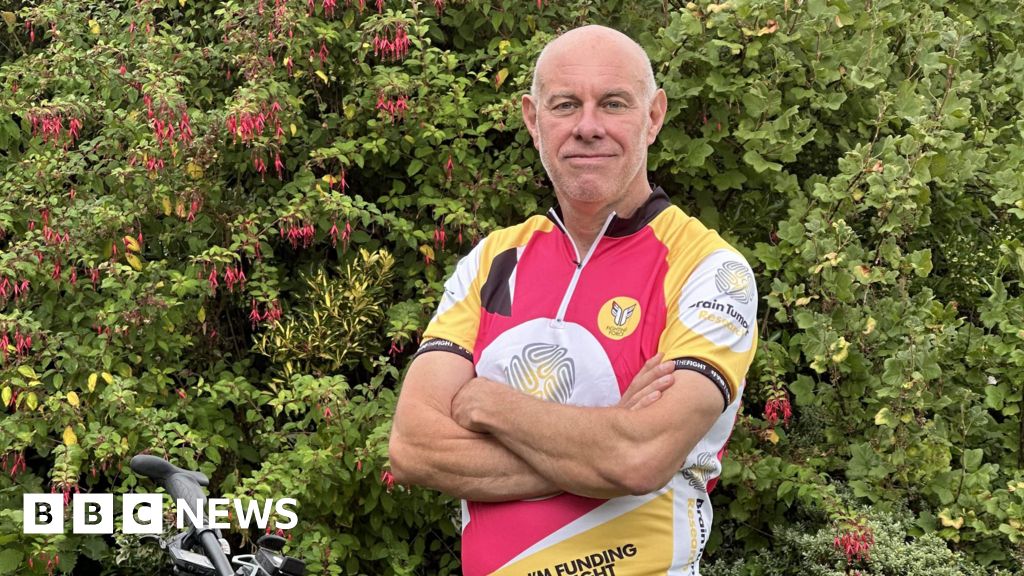
BBC News, South East
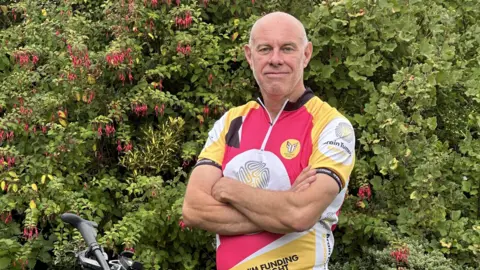 Brain Tumour Research
Brain Tumour ResearchA man who said he appeared drunk but was actually suffering from a brain tumour is helping to raise awareness of the disease.
John Starns, from Sutton Valence, Kent, was initially told he had vertigo but when there was no improvement with medication, an MRI scan three months later revealed a brain tumour.
The 63-year-old freelance photographer described his diagnosis as a “scary process”.
But he said he will “never forget the emotional release when the nurse told me my tumour was benign”.
It began in February 2022 when Mr Starns “suddenly felt unwell” commuting to London.
“It felt as though I was having a panic attack,” he said. “I was disorientated and it became difficult to walk.”
Mr Starns got off his train at Sevenoaks.
He said: “I found a bench and sat there for two hours, alone.
“No-one approached me, I suspect because they thought I was drunk.”
More than three years on, Mr Starns is monitored with a scan every two years.
He said: “So far, scans have showed my tumour as stable, and I barely suffer with any side effects.
“I am one of the lucky ones.”
 John Starns
John StarnsMr Starns, a keen cyclist, is participating in a charity challenge to cycle 274 miles during August.
He said: “My story could have ended differently.
“My hope is that by supporting Brain Tumour Research, more people will benefit from the advances in research.”
Brain tumours kill more men under 70 than prostate cancer, yet just 1% of the national spend on cancer research has been allocated to brain tumours since records began in 2002, according to Brain Tumour Research.
Charlie Allsebrook, the charity’s community development manager, said: “Brain tumours are indiscriminate and can affect anyone at any age.”

File photo. [AP]
Alcohol-related cancer deaths have surged in recent decades, experts report, even as overall cancer mortality declines. In the US they have nearly doubled over the past three decades, rising from 12,000 in 1990 to more than 23,000 in 2021, despite an overall decline in cancer mortality, experts revealed at the American Society of Clinical Oncology (ASCO) conference.
Greek researchers Dr Theodora Psaltopoulou, professor of therapeutics, epidemiology, and preventive medicine at the National and Kapodistrian University of Athens (NKUA), biologist Alexandra Stavropoulou, and Professor Thanos Dimopoulos, former NKUA rector and director of the Therapeutics Clinic at Alexandra Hospital, highlight strong links between alcohol and cancers of the liver, colon and esophagus.
Τhe majority of cases in the US were men over 55, who showed a 70% mortality increase.
Public awareness remains low, with only 40% of Americans recognizing alcohol as a cancer risk. Experts urge immediate public health campaigns and alcohol warning labels.
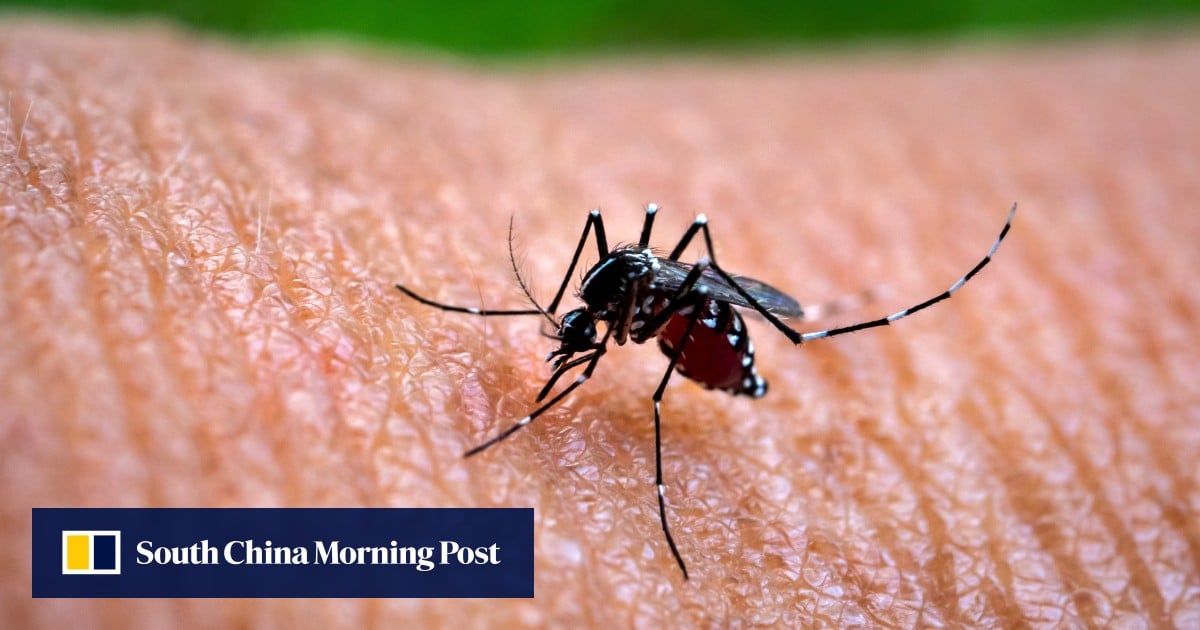
Hong Kong has confirmed its first imported case of Chikungunya fever since 2019, involving a boy who returned from the mainland Chinese city of Foshan which is facing an outbreak of the mosquito-borne disease, the Post has learned.
A source confirmed the imported case of the Chikungunya infection on Saturday weeks after outbreaks of the disease were identified in Guangdong. About 6,100 cases have been recorded in the province so far, with about 90 per cent of patients concentrated in Foshan’s Shunde district.
The boy had been staying in Shunde for almost two weeks before returning to Hong Kong, according to a source.
Health authorities are expected to announce more details later on Saturday.
Chinese Vice-Premier Liu Guozhong visited the southern city of Foshan in Guangdong province, urging residents to “strictly implement port health quarantine measures”, according to state news agency Xinhua on Friday.
During his trip to Guangdong, Liu told authorities to “improve prevention and control measures”, “effectively eliminate mosquitoes” and halt the disease’s “spread channels”.
Chikungunya fever is spread by Aedes albopictus mosquito bites, with cases typically developing fever and joint pain that can last for a long period. Other potential symptoms include muscle pain, nausea and rashes.
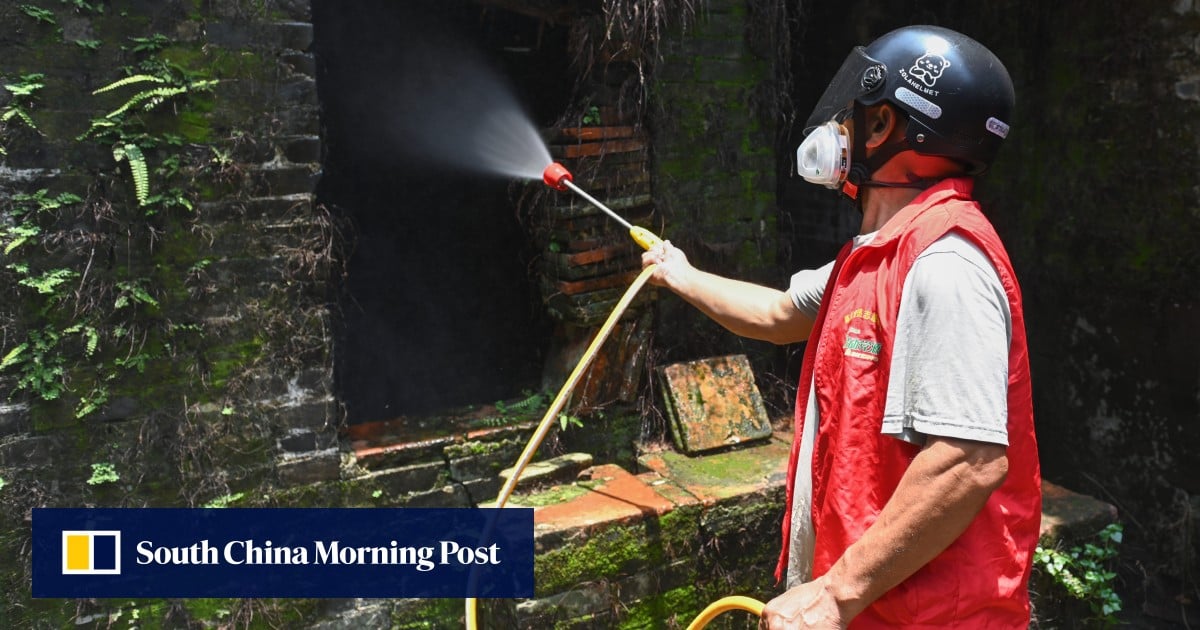
Chinese Vice-Premier Liu Guozhong visited the southern city of Foshan in Guangdong province, urging the city to “strictly implement port health quarantine measures”, according to state news agency Xinhua on Friday.
During his trip to Guangdong, Liu told authorities to “improve prevention and control measures”, “effectively eliminate mosquitoes” and “cut off epidemic spread channels”.
Foshan, a manufacturing hub of 10 million residents, accounted for 2,882 cases, or about 60 per cent of 4,824 reported cases in Guangdong as of July 26. There have been no fatalities.
Outside Guangdong, Macau has also reported two cases, both of whom had previously travelled to Foshan. Hong Kong has not reported any cases since the outbreak.
This is China’s worst outbreak of the disease in decades, and Foshan authorities issued notices earlier this week offering nucleic acid PCR tests in several neighbourhoods.